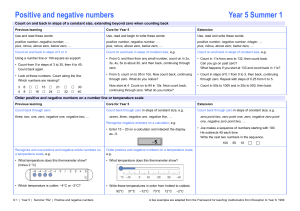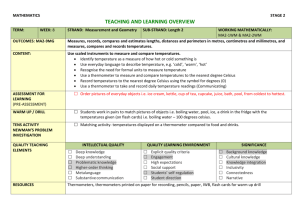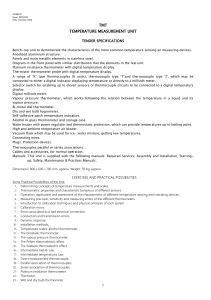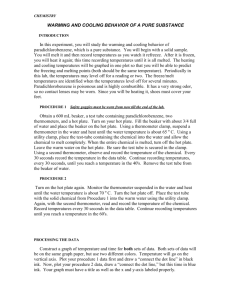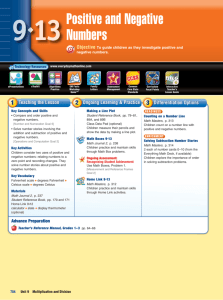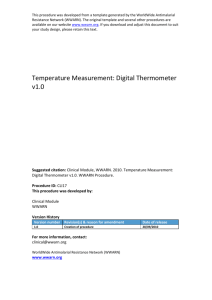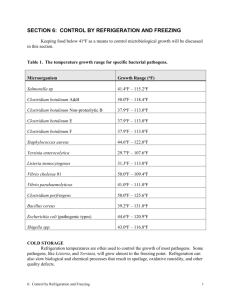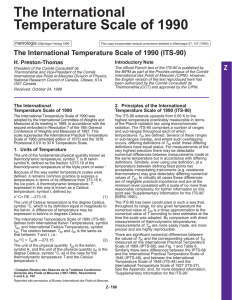Temperature - Jeffers Foundation
advertisement
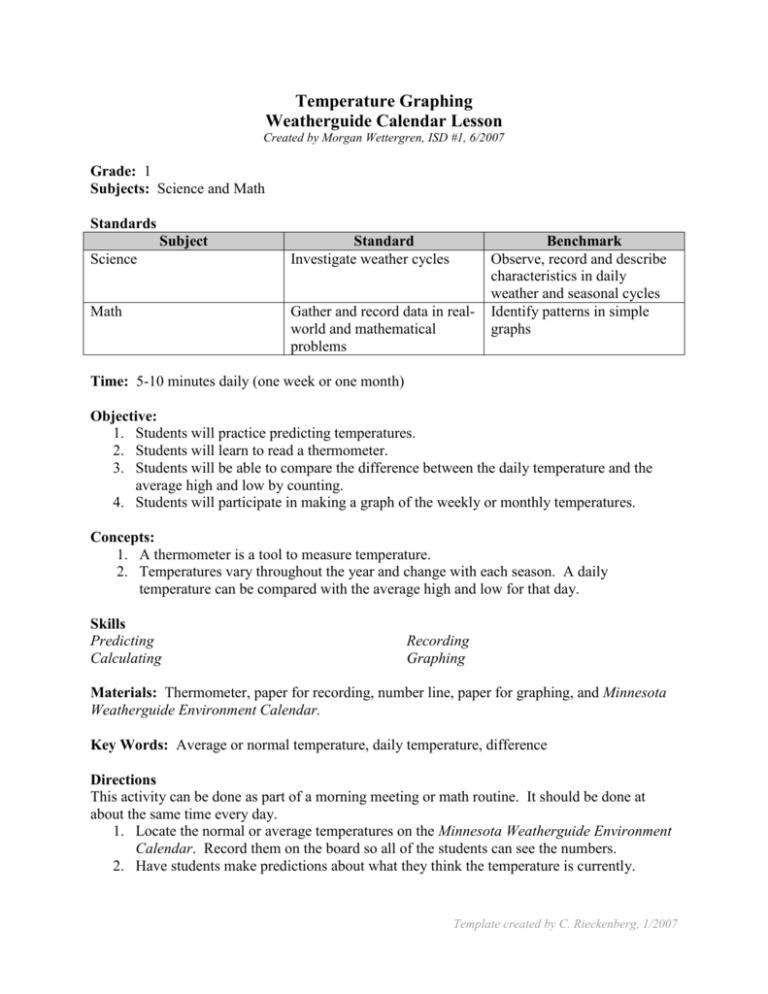
Temperature Graphing Weatherguide Calendar Lesson Created by Morgan Wettergren, ISD #1, 6/2007 Grade: 1 Subjects: Science and Math Standards Subject Science Math Standard Investigate weather cycles Gather and record data in realworld and mathematical problems Benchmark Observe, record and describe characteristics in daily weather and seasonal cycles Identify patterns in simple graphs Time: 5-10 minutes daily (one week or one month) Objective: 1. Students will practice predicting temperatures. 2. Students will learn to read a thermometer. 3. Students will be able to compare the difference between the daily temperature and the average high and low by counting. 4. Students will participate in making a graph of the weekly or monthly temperatures. Concepts: 1. A thermometer is a tool to measure temperature. 2. Temperatures vary throughout the year and change with each season. A daily temperature can be compared with the average high and low for that day. Skills Predicting Calculating Recording Graphing Materials: Thermometer, paper for recording, number line, paper for graphing, and Minnesota Weatherguide Environment Calendar. Key Words: Average or normal temperature, daily temperature, difference Directions This activity can be done as part of a morning meeting or math routine. It should be done at about the same time every day. 1. Locate the normal or average temperatures on the Minnesota Weatherguide Environment Calendar. Record them on the board so all of the students can see the numbers. 2. Have students make predictions about what they think the temperature is currently. Template created by C. Rieckenberg, 1/2007 3. Have a student read the actual temperature using a thermometer that was placed outside before the lesson. 4. Record the temperature on the recording paper. 5. Refer back to the normal high and low. Using the current temperature, count the difference between the average high and the average low. 6. At the end of the week or end of the month, make a graph of the daily temperatures. Discuss the data displayed on the graph. Questions for Discussion 1. What was the highest, lowest, and most common recording for the recording period? 2. Why might the temperature be higher or lower than the normal for a recording period? 3. Who might be interested in knowing the daily temperature? People hosting outdoors events, farmers, construction workers, etc. Taking it Further 1. Students record daily temperatures at home and make their own graph. 2. Pick a city from the southern hemisphere and use a daily newspaper to record the previous day’s temperature. Compare these data points with those of the classroom thermometer. 3. Place the thermometer in different places outside and investigate if they make a difference in the temperature. For example, compare windy and non windy spots or the top of a snow bank versus six inches into the snow. Template created by C. Rieckenberg, 1/2007




